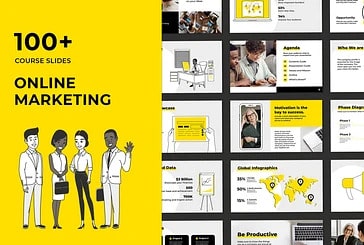
AI
Sometimes it seems that the trendiest word today is a “startup”.
In tech centers like Silicon Valley, Singapore or, well, any startup hub, many are engaged in forming or even launching their own startups.
While the popular definition of a startup as a “tech company with less than 100 people” isn’t wrong, it fails to explain its’ entire philosophy.
Let’s explore the definition of a startup according to the Silicon Valley legend Steve Blank.
For many years investors treated startups as small businesses. This was a real problem because there is a huge conceptual and organizational difference between a startup, small business, and large corporation.
According to Steve Blank, a startup is a “temporary organization designed to search for a repeatable and scalable business model”, while the small business runs according to the fixed business model.
For a startup founder this concept means the following three main functions:
For better understanding, watch the video, where Steve Blank describes the difference between a startup and a small business.
According to Steve Blank, there are six different types of startups:

Lifestyle entrepreneurs are living their preferred lives while working for no one, but themselves. In Silicon Valley, such professionals are freelance coders or web designers, who love their jobs, because of passion.
Small businesses are grocery stores, hairdressers, bakers, travel agents, carpenters, electricians, etc. They are those, who runs his/her own business to feed the family. Small business entrepreneurship is not designed to scale.
Google, Uber, Facebook, Twitter are just the latest examples of scalable startups. From the very beginning, the founders believe that they are going to change the world.
Such startups hire the best and the brightest. They always search for a repeatable and scalable business model. When they find it, they start to look for more venture capital to boost their businesses. Often scalable startups group together in innovation clusters (Silicon Valley, Shanghai, New York, Boston, Israel, etc.).
During the last five years, startups that offer Web and mobile app solutions, are sold to larger companies. This tendency becomes more and more popular. Their goal is not to build a billion-dollar company, but to be sold to a larger company for pretty cash.
Large companies have a finite life duration. Changes in customer preferences, new technologies, legislation issues, new competitors create pressure, forcing large companies to create new innovative products for new customers in new markets (for example – Google and Android).
They are passionate and driven to make an impact. However, unlike scalable startups, their mission is to make the world a better place, not for wealth’s sake, but for an idea.
Recommended Reading
First and foremost you need to have a good idea, something that people will use, love, and won’t be able to live without, something that will change their life for the better. Those pitches usually stick!
Silicon Valley investor, author, and marketing expert Guy Kawasaki once compared a startup pitch to online dating. According to Kawasaki, investors, who listen to your pitch are not interested in your entire background, they’re not going to get to know you, and they don’t want to be your friend. In this 3-minute harsh race, only one thing matters – whether you are hot or not.
There are some tips to general public speaking that you shouldn’t ignore when pitching your startup idea, like the design of your presentation, its length. You need to research the people you are pitching to, to be relevant and interesting to them, and be able to catch their attention. And let’s not forget about your brand name, which you can come up with using the AI name generator.
 |
 |
 |
Most likely a startup and a small business start from a mere idea, and with the founder’s own or friends/family money, or a bank loan. Later, a successful startup receives funding from angel investors, venture capitalist, or IPO. With each funding, an investor receives a part of the company and becomes a co-owner of the startup.
You won your pitch and found your funding. So now you need to actually start working and building your company. There are steps to get the ball rolling and actually start on your work.
Like any other newly formed company you need to do research on the market and see if what you want to do is really needed.
Another thing to do that helps is designing a minimal product, since what you had in mind and the final product will be far away from each other, but just make sure to keep the essential parts of it, so you won’t end up with a completely different product.
As a startup, you probably don’t have enough funds, however, you still need to grow and market yourself, and as we all know, you need investments in marketing as well.
There are many different tools for startups that you can use to grow, but some of them can be rather costly. However, luckily, there are many ways that you can promote your business without extra costs or at least limit them to the minimum.
For example, you need to pay attention to SEO – search system optimization cannot be ignored in the Google world. Read how-to-guides on SEO. It can be crucial for your marketing campaign.
Another important point to focus on is email marketing campaigns. It is claimed to be “the gold standard of marketing”. News concerning product updates, special pricing and discounts, and corporate news must be sent to your customers. Keep your e-mails short and avoid being annoying. Think proper about your subject line: It must be engaging to avoid the reader’s deletion.
A startup is a passion, with drive, focused on an idea. It navigates through uncountable difficulties for finding a way to success – overcoming even impossible-to-climb barriers. But, actually, this crazy ride somewhere and somehow ends.
The question is, when?
Where is this turning point, when a startup simply becomes like any other company, losing its “startup” status?

Adam D’ Augelli, an associate at San Francisco based venture capital firm True Ventures, states, that a company is a startup until it finds product/market fit and begins to scale.
While the definition is hard to understand, there are signs, that your startup is no longer a startup, and here are some of them.
Once upon a time, Uber and Pinterest, both six years old, were startups. Today, they are consuming other startups like a dragon. They add these minor groups to their evolving giants. If your startup is so well-established, that you can buy other startups, you’re not likely running a startup.
When you reach the point in your business, where you’re asked to invest in other companies you can be sure that you’re moving out of the startup stage.
Risk-taking is an essential part of developing entrepreneurship, however, it’s a hard game the entrepreneurs play in the more mature phase of their development. If you’re not in a search of large investments and you’re no longer sacrificing your personal capital to survive, you’ve probably outgrown the startup status.
There are a bunch of metrics, such as the number of employees, number of funding rounds, revenue, and etc., but TechCrunch writer Alex Wilhelm sets his own 50-100-500 rule. According to his rule, if a company fits or exceeds any of these criteria, it is not a startup anymore.
Guess, you have reserves in the bank, your employees are paid so well, that they even have benefits, and you are profitable enough to bring home a pretty penny as well as you know what you’re worth. Congratulations, you’ve, probably, passed the startup stage.
If the brands you’ve previously worked with are no longer as important as your company if you don’t need to sell the info about who you worked with, instead, famous brands recognize your name and want to partner with you, then you’ve built a brand that speaks for itself.
If the times, when you and your first coworkers worked together in a garage passed, and your employee number doubled or even tripled, since foundation, then you are likely in a phase, when your company can’t be called startup anymore.
To Sum Up
Steve Jobs once said that he loved the startup architecture, and want Apple to become the biggest startup in the world. Sure, Apple isn’t a startup anymore, but what Steve Jobs was talking about wasn’t the company’s price, instead, he was speaking about this “startup mindset.”
Never stop being a startup. Sure, it’s impossible for your company to continue on the same trajectory when it’s already a mature company, but it’s important to have the passion and drive, that you had from the very beginning.
Sources: Steve Blank Entrepreneurship and Innovation, Techmeetups Blog, Forbes, Business Insider, Business.com, Fortune, Onboardly.
Article by: Renderforest Staff
Dive into our Forestblog of exclusive interviews, handy tutorials and interesting articles published every week!
Read all posts by Renderforest Staff

